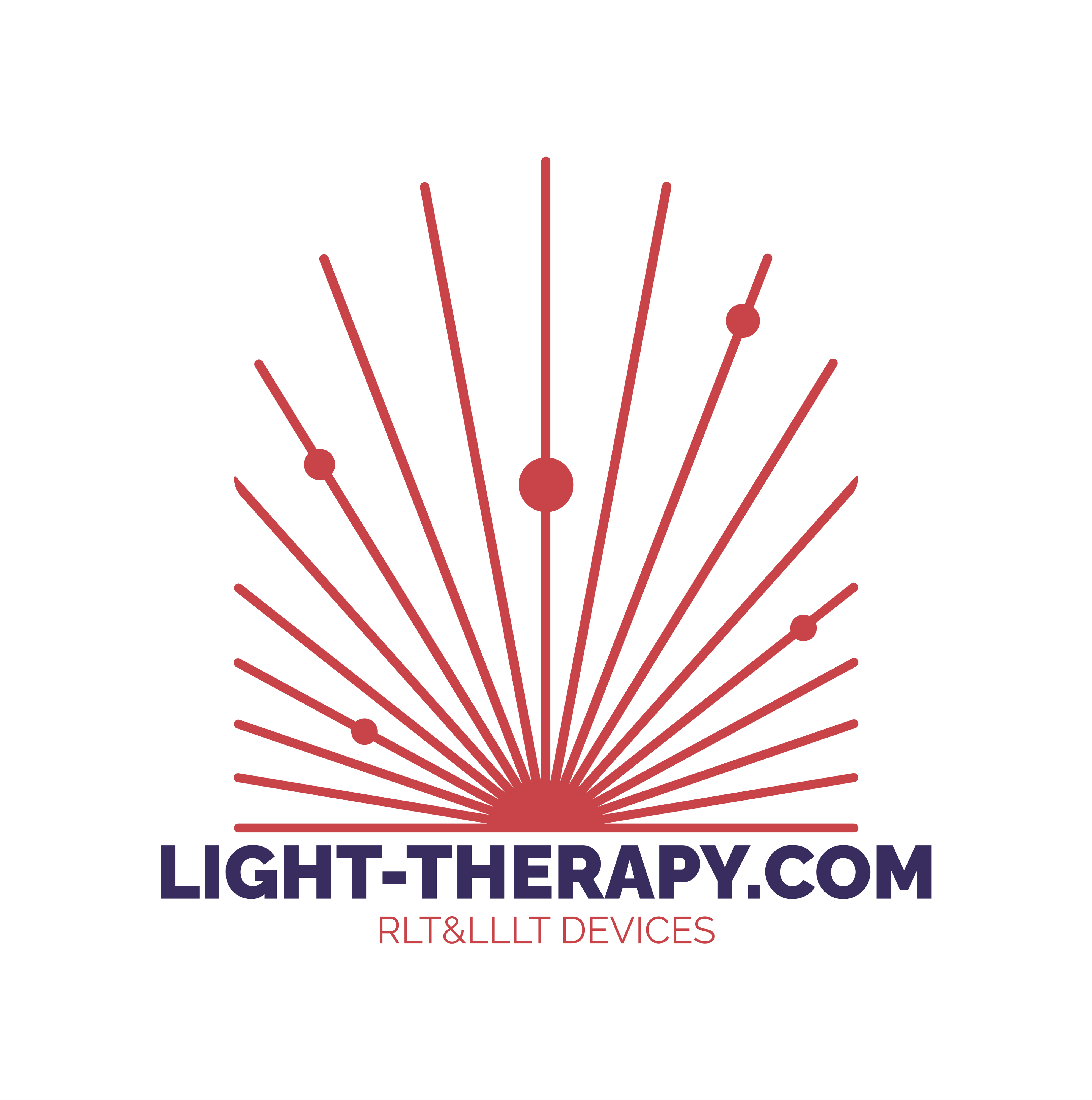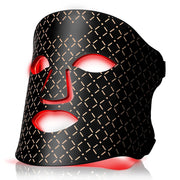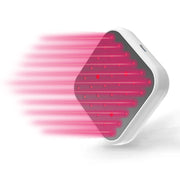Red light therapy has made inroads at gyms, medical spas, dermatology offices, and now tanning salons. Oddly, the two services couldn’t be more different: Tanning damages your skin from the outside in, while red light therapy focuses on healing from the inside out. But the real question is, are red light therapy sessions at salons – which can run anywhere from $25 to $100 per session – worth the price?
The answer is, probably not. Let’s take a look at the benefits of red light therapy and compare the cost of sessions at a tanning salon with the investment you’d make in an at-home device.
How Does Red Light Therapy Work?
Also called low-level light therapy (LLLT) and photobiomodulation (PBM), red light therapy is a therapeutic practice that uses red wavelengths of the light spectrum. Red wavelengths range from 630 nanometers (nm) to 660nm, and near-infrared (NIR) wavelengths range from 800nm to 1100nm. “Red light therapy” is an umbrella term that is used to refer to both red and NIR wavelengths.
Research has shown that the wavelengths most beneficial for healing are between 620nm and 660nm (red), and between 810nm and 850nm (NIR). This is known as the “therapeutic window.”
Part of what makes these wavelengths so remarkable is that they initiate healing at the cellular level. This is possible because the wavelengths penetrate the skin; red light to about 10mm, and NIR light to about 2 to 7 centimeters, which is deep enough to penetrate body tissues and even bone. Upon penetration, the light stimulates mitochondria, which are tiny organelles inside cells that convert nutrients into a high-energy molecule called adenosine triphosphate (ATP). ATP is the body’s primary cellular fuel and is required for all cellular functions.
Newly energized cells produce a surge in ATP production. As thousands of studies and scientific reviews have shown, this surge yields a range of physiological benefits, from those that are skin deep to the more systemic.

Beauty Benefits
Wrinkles: Sun exposure can have a detrimental impact on our skin over time. The culprit is ultraviolet (UV) light; it breaks down the collagen and elastin fibers responsible for keeping skin taut and toned, which leads to fine lines and wrinkles. Reversing sun damage requires a serious collagen boost – and that’s where LLLT comes in.
The surge of ATP previously mentioned can bump up collagen production and help diminish signs of aging skin. A 2009 study by researchers from Quebec, Canada found that consistent sessions of LLLT seemed to reduce the depth and severity of lines and wrinkles in 94 percent of participants.
Skin Tone: As skin ages and collagen breaks down, skin can become rough and uneven. Many studies have shown that red light therapy can smooth out these imperfections.
One such study was published in 2014 by researchers from Germany. The study involved 113 subjects between the ages of 27 and 79 who were randomly assigned to one of four treatment groups. Depending on their group, the participants received twice-weekly treatments with either 611–650nm or 570–850 nm wavelengths, with slight differences in treatment duration and irradiance (the measure of how much light energy an area of the body receives).
Data collected after 30 sessions showed that all participants saw improved skin complexion and skin feeling, as well as improved skin roughness and collagen density.
Stretch Marks: Extremely common and caused by a variety of factors, such as weight gain, pregnancy, and genetics, stretch marks are a type of linear skin lesion many people wish they could simply erase.
The good news for people with stretch marks is that red light treatments have been shown to diminish the appearance of these lines. In 2017, researchers in Germany and Brazil published a review of current therapies for stretch marks.
The researchers noted that treatments using a red light-emitting diode on females with an array of stretch marks increased overall skin thickness, collagen, and elastin density when compared to baseline.
Red Light Therapy and Tanning: Although you can achieve a golden tan from a red light tanning bed, your darkening skin is actually a sign of skin damage – and it can be severe and long-lasting. According to the American Academy of Dermatology Association, the use of indoor tanning beds leads to wrinkles, loss of skin firmness, and age spots.
If you’re dead-set on tanning, you’d be wise to incorporate PBM sessions as a skin rejuvenation treatment. As stated above, consistent use of PBM can go a long way in smoothing out fine lines, wrinkles, and rough skin.

Health and Wellness Benefits
So far we’ve focused on the cosmetic benefits of red light therapy, but this amazing treatment is about a lot more than beauty. It’s also a well-researched method of relieving certain conditions caused by inflammation, which is the body’s response to damage. Acute inflammation is a natural function of the immune system, but when inflammation becomes chronic, it can lead to a host of problems.
Muscle recovery: Vigorous workouts cause small tears in muscles; when repaired by the body, this results in stronger muscles. Although natural, this process can be painful if inflammation sets in and causes chronically inflamed muscles and joint pain, such as bursitis or Iliotibial band syndrome.
LLLT has been shown to ease muscle pain and improve muscle recovery and blood circulation among athletes. In a 2008 study published in Photomedicine and Laser Surgery, researchers from Brazil investigated whether LLLT could alleviate the development of skeletal muscle fatigue during repeated voluntary biceps contractions.
The study found that athletes who received LLLT sessions after bicep contractions were able to do more reps after the eight-day trial than the placebo group. From this, the researchers concluded that LLLT can delay the onset of muscle fatigue and exhaustion.
Fibromyalgia: Inflammation and oxidative stress are the main causes of fibromyalgia, a disease that is characterized by musculoskeletal pain, fatigue, and sleep, memory, and mood issues, and affects about 4 million Americans. In a major scientific review published in 2019, researchers from Taiwan found that the majority of patients who received LLLT for fibromyalgia showed significant improvement in symptoms. The authors deemed red light therapy an “effective, safe, and well-tolerated treatment for fibromyalgia.”
In a nutshell, red light therapy helps your body inside and out and provides a wide array of benefits, including support for stellar skin and overall health.










